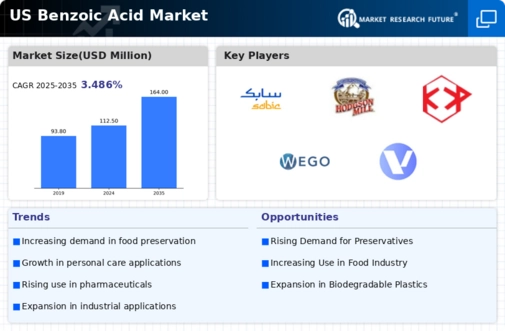The US Benzoic Acid Market exhibits a robust competitive landscape characterized by the presence of several established players and emerging companies. Key factors influencing competition include product innovation, pricing strategies, and strategic partnerships. The market serves various end-user industries such as food and beverage, pharmaceuticals, and personal care, among others, creating diverse opportunities for participants. As environmental and regulatory standards become stricter, companies in this sector are increasingly focusing on sustainable production methods. This competitive environment encourages manufacturers to invest in research and development to meet evolving consumer preferences while navigating price fluctuations in raw materials.
Continuous monitoring of technological advancements and market demands is crucial for companies seeking to enhance their market position.Jiangshan Chemical retains a stronghold in the US Benzoic Acid Market through its consistent product quality and reliable supply chains. By focusing on efficient manufacturing processes, Jiangshan Chemical has established itself as a key player, ensuring a steady availability of benzoic acid to various industrial sectors. With a reputation for meeting stringent quality regulations, the company has developed a loyal customer base within the US market.
Jiangshan Chemical's strategic implementations in customer service and partnerships with distributors further bolster its competitive position, facilitating a broader reach and faster response times. Its commitment to innovative solutions has allowed the company to adapt to the changing dynamics of the market, making it well-suited to cater to diverse applications of benzoic acid in the United States.SABIC holds a significant position in the US Benzoic Acid Market, leveraging its integrated business model and extensive product portfolio. The company's offerings include not only benzoic acid but also various chemical compounds utilized across different industries.
SABIC's strengths lie in its advanced manufacturing capabilities and focus on sustainability, which resonate with the increasing environmental considerations within the industry. By engaging in multiple mergers and acquisitions, SABIC has enhanced its market presence and expanded its operational efficiencies in the US region. Its commitment to research and development has led to innovative practices that ensure high-quality production and cater to diverse market needs. Overall, SABIC’s strategic initiatives and comprehensive understanding of the US benzoic acid landscape make it a formidable player in the competitive marketplace.
















Leave a Comment